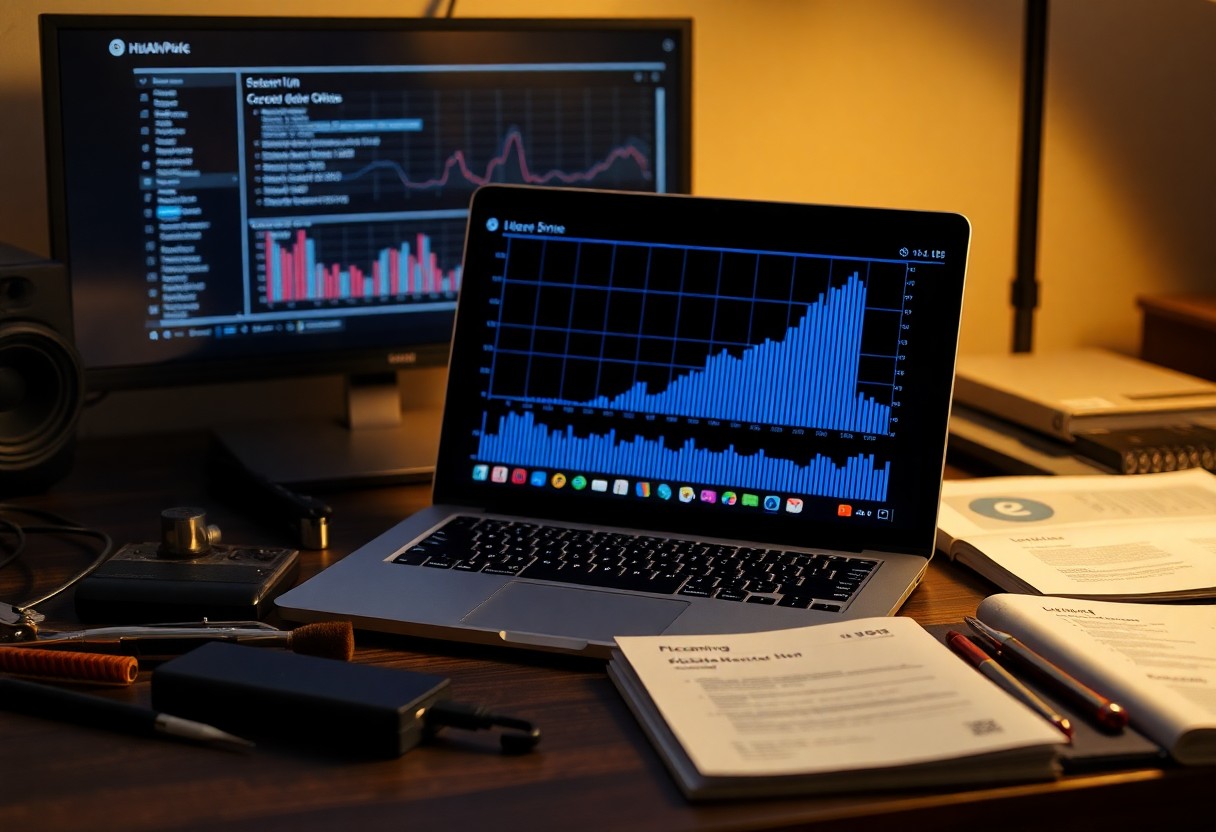You can transform your laptop into a high-performance machine by following a few simple steps. Whether you use your device for work, gaming, or everyday tasks, optimizing its performance can improve speed, efficiency, and overall usability. In this guide, we will explore key strategies to enhance your laptop’s capabilities, from adjusting settings and managing storage to upgrading hardware and running maintenance routines. Get ready to unlock the full potential of your laptop and enjoy a smoother, faster computing experience.
Contents
- Understanding Performance Factors
- Hardware Specifications
- Operating System Capabilities
- How-To: Clean Up Your Laptop
- Removing Unnecessary Files
- Uninstalling Unused Applications
- How-To: Optimize Startup Processes
- Managing Startup Programs
- Using Task Manager Effectively
- How-To: Upgrade Hardware Components
- Increasing RAM
- Upgrading to SSD
- How-To: Adjust Power Settings
- Selecting the Right Power Plan
- Customizing Advanced Power Options
- Tips for Maintaining Optimal Performance
- Regular Software Updates
- Utilizing Disk Cleanup Tools
- Summing up
Understanding Performance Factors
A laptop’s performance is influenced by various interconnected factors that you must consider for optimal speed and efficiency. These include:
- Hardware specifications
- Operating system capabilities
- Software inefficiencies
- Heat generation and cooling solutions
- Background processes
Thou must analyze these elements to enhance your laptop’s performance effectively.
Hardware Specifications
The specific hardware in your laptop, such as the processor, RAM, and storage type, plays a significant role in determining its overall performance. Upgrading these components can dramatically enhance responsiveness and multitasking abilities.
Operating System Capabilities
Capabilities of your operating system dictate how well your laptop utilizes its hardware resources. A well-optimized OS can manage tasks more efficiently, ensuring that your laptop runs smoothly under various workloads.
This includes features such as memory management, process scheduling, and system updates, all of which directly impact performance. By keeping your operating system up to date and fine-tuning its settings, you can maximize your laptop’s potential and create a seamless user experience.

How-To: Clean Up Your Laptop
The performance of your laptop can significantly improve by cleaning it up. This involves organizing your files, removing bloatware, and ensuring that you have enough free space for your system to run efficiently. A thorough cleanup allows your laptop to operate faster, extends its lifespan, and enhances your overall user experience. Adopting a regular cleaning routine can help maintain optimal performance over time.
Removing Unnecessary Files
The first step in cleaning up your laptop is to remove unnecessary files that take up valuable space. Start by deleting temporary files, large downloads, and old documents you don’t need anymore. Tools like Disk Cleanup can assist you in identifying and removing files that are no longer useful. Regularly clearing out your clutter is vital for maintaining your laptop’s efficiency.
Uninstalling Unused Applications
Even if you no longer use certain applications, they can still occupy precious storage space. By uninstalling these unused programs, you can help your laptop run smoother and faster. Consider checking for any pre-installed applications that you may never have used, as well as any third-party applications that have fallen out of use.
Removing unused applications is a straightforward process but can have a significant impact on your laptop’s performance. Go through your applications list and evaluate which programs you truly need. Uninstall anything that you haven’t used in the last few months. This not only frees up storage space but can also reduce background processes that slow down your system. Make it a habit to periodically assess your applications to keep your laptop in top shape.
How-To: Optimize Startup Processes
One way to enhance your laptop’s performance is by optimizing your startup processes. This involves managing which applications launch automatically when you turn on your device. By reducing the number of programs running at startup, you can significantly speed up boot times and improve overall system responsiveness.
Managing Startup Programs
One effective method for managing startup programs is to disable unnecessary applications. You can do this by accessing the Startup tab in the Task Manager. Review the list of applications and disable those you don’t need immediately when your laptop starts, allowing for a smoother boot process and freeing up system resources.
Using Task Manager Effectively
With Task Manager, you hold the keys to monitoring and optimizing your laptop’s performance. This built-in tool allows you to view all active processes, applications, and services, enabling you to identify and disable any that may be slowing down your system during startup.
Startup programs have a significant impact on how quickly your laptop boots and how well it performs. In Task Manager’s Startup tab, you can easily sort programs by their impact on startup time. Make sure you disable any programs you don’t use regularly. This fine-tuning can free up your system’s resources, leading to smoother performance while using your laptop.

How-To: Upgrade Hardware Components
Many laptop users overlook the benefits of upgrading hardware components, but doing so can significantly boost your device’s performance. Depending on your laptop model, you may find room for enhancements like increasing RAM or switching to an SSD. These upgrades can provide a noticeable difference in speed and efficiency, making your laptop feel brand new without the cost of a replacement.
Increasing RAM
Hardware upgrades are imperative for improving your laptop’s multitasking capabilities. By increasing your RAM, you allow your system to handle more applications simultaneously, which enhances overall performance. This is particularly important if you work with memory-intensive programs like video editing software or if you commonly keep multiple browser tabs open.
Upgrading to SSD
Assuming your laptop has a traditional hard drive, upgrading to an SSD can dramatically improve load times and system responsiveness. This transition not only accelerates boot time but also significantly enhances file access speeds, making your daily tasks quicker and more efficient.
Upgrading to an SSD also provides you with better durability, as solid-state drives are less prone to physical damage compared to traditional hard drives. With faster read and write speeds, you’ll experience rapid application launches and smoother operation, greatly improving your productivity. It’s an investment that offers tangible benefits, turning your laptop into a high-performance machine.
How-To: Adjust Power Settings
All laptops come equipped with various power settings that can significantly affect performance. To get the most out of your device, it’s imperative to customize these settings to suit your needs. For in-depth guidance, check out this How to Optimize Your Laptop for Maximum Performance.
Selecting the Right Power Plan
Any power plan you choose can impact your laptop’s performance. It’s best to select the ‘High Performance’ plan to ensure your CPU runs at maximum speed when needed. However, keep in mind that this may lead to increased battery consumption.
Customizing Advanced Power Options
You can further enhance your laptop’s performance by customizing advanced power options. This allows you to tailor specific settings for different scenarios, improving efficiency and performance.
Important Advanced Power Options
|
Controls how long your hard disk remains idle before shutting down. |
|
Sets minimum and maximum processor states for better energy usage. |
|
Adjusts the timing for putting your laptop to sleep or turning off the display. |
Adjusting your advanced power settings can significantly contribute to your laptop’s overall efficiency. By carefully managing each option, you can ensure a smooth performance tailored to your typical usage patterns.
Steps to Customize Advanced Power Options
|
Navigate to ‘Hardware and Sound’ then ‘Power Options’. |
|
Click on ‘Change plan settings’ next to your selected power plan. |
|
Modify settings relevant to your preferences and performance needs. |
Tips for Maintaining Optimal Performance
To ensure your laptop runs smoothly, adopt habits that support its performance. Follow these tips:
- Regularly restart your laptop to clear memory and refresh the system.
- Keep your files organized to avoid clutter.
- Limit the number of startup programs.
- Clean hardware components like the keyboard and screen.
- Be mindful of heat; use your laptop on hard surfaces.
This will help you enjoy a seamless computing experience.
Regular Software Updates
While it might seem minor, keeping your software up-to-date significantly impacts your laptop’s performance. Regular updates patch security vulnerabilities and can introduce optimizations that enhance speed and functionality. Schedule automatic updates to ensure you’re always running the latest version of your operating system and applications, which contributes to a smoother and more secure experience.
Utilizing Disk Cleanup Tools
Disk cleanup tools are imperative for keeping your laptop free of unnecessary files and improving overall performance. By running these tools, you can delete temporary files, system cache, and other clutter that accumulates over time. This not only frees up disk space but also allows your system to operate more efficiently.
Tools designed for disk cleanup, such as the built-in Disk Cleanup utility or third-party applications, can automate the process, making it easier for you to maintain your system’s health. By regularly scanning and removing unwanted files, you enable faster access to your important data, resulting in a more responsive and efficient laptop. Consistent use of these tools mitigates the risk of your device slowing down due to an overloaded hard drive.
Summing up
Now that you have the tools to optimize your laptop for maximum performance, you can enhance your computing experience significantly. By employing methods such as managing your startup programs, regularly updating software, and maintaining adequate storage space, you’ll ensure your device runs smoothly. Techniques like adjusting power settings and cleaning up unnecessary files also play a vital role. By committing to these practices, you’ll empower your laptop to perform at its best, enabling you to accomplish tasks efficiently and effectively.

Leave a Reply